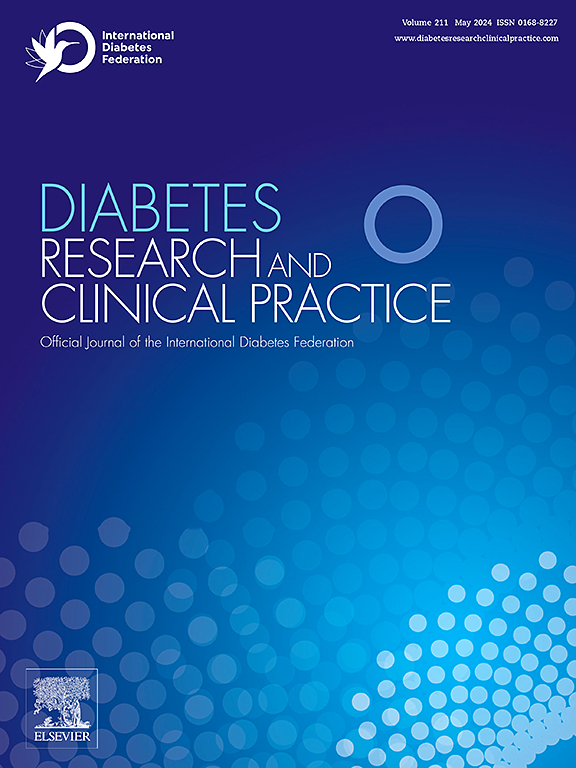The effect of resistance training on blood pressure and resting heart rate in type 2 diabetes: A systematic review and meta-analysis of randomized controlled trials
IF 6.1
3区 医学
Q1 ENDOCRINOLOGY & METABOLISM
引用次数: 0
Abstract
This meta-analysis assessed the impacts of resistance training on hemodynamic outcomes, including blood pressure and heart rate, in patients with type 2 diabetes (T2D). Four databases were searched following PRISMA guidelines. Randomized controlled trials (RCTs) comparing resistance training to usual care were included if they evaluated systolic and diastolic blood pressure (SBP and DBP), heart rate, and maximum oxygen uptake (VO2max) in adults with T2D. Random-effects models were used to calculate mean differences, with corresponding 95 % confidence intervals (CIs). Twenty-six RCTs were included. Resistance training significantly reduced SBP by −4.13 mmHg (95 % CI: −6.40, −1.85; p = 0.0004) and DBP by −2.03 mmHg (95 % CI: −3.69, −0.38; p = 0.02), with greater reductions in interventions lasting over 12 weeks. Resting heart rate decreased by −3.17 bpm (95 % CI: −6.33, −0.01; p = 0.05) and VO2max improved by 0.27 ml/kg/min (95 % CI: 0.02, 0.53; p = 0.04). Meta-regression revealed that intervention duration, session frequency, and study quality did not significantly explain the observed heterogeneity. Resistance training effectively improves hemodynamic outcomes T2D patients, but high heterogeneity in blood pressure outcomes and limited subgroup data on specific subgroups (e.g., women) restrict generalizability. Further research should explore heterogeneity sources and optimize resistance training protocols.
求助全文
约1分钟内获得全文
求助全文
来源期刊

Diabetes research and clinical practice
医学-内分泌学与代谢
CiteScore
10.30
自引率
3.90%
发文量
862
审稿时长
32 days
期刊介绍:
Diabetes Research and Clinical Practice is an international journal for health-care providers and clinically oriented researchers that publishes high-quality original research articles and expert reviews in diabetes and related areas. The role of the journal is to provide a venue for dissemination of knowledge and discussion of topics related to diabetes clinical research and patient care. Topics of focus include translational science, genetics, immunology, nutrition, psychosocial research, epidemiology, prevention, socio-economic research, complications, new treatments, technologies and therapy.
 求助内容:
求助内容: 应助结果提醒方式:
应助结果提醒方式:


